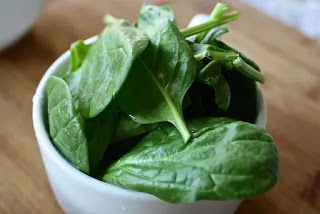Anemia is a disease of red blood cells. Red blood cell consists of molecules within them called as hemoglobin. Hemoglobin molecule further consists of ferrous ions (Fe2+) i.e. iron.
Work of hemoglobin is to transport Oxygen molecules from lungs to our body tissues. This is possible with the help of iron molecules present in hemoglobin. So, when the body is deficient of iron, function of hemoglobin reduces and hence body cannot get enough Oxygen to function properly.
Due to this, number of hemoglobin molecules in red cells decrease making the red cells weak. About 70% of iron is present in red blood cells of blood and 5% is present in myoglobin of muscles. Iron is also a constituent of several proteins/enzymes such as catalase, cytochromes, peroxidase, etc. Therefore it is necessary for iron level to be normal in our body. Iron deficiency is the most common cause of Anemia.
Causes of Iron deficiency anemia :-
• Low dietary intake of iron due to poverty, malnutrition.
• Decreased absorption of iron from food.
• Increased requirement of iron in growing children, reproductive age, pregnancy and lactation.
• Blood loss in accidents, trauma, colon cancer and also hookworm infection.
Normal daily requirement of iron :-
• Adult man -7 to 10 mg/day
• Adult woman - 7 to 20 mg/day
• Pregnant and lactating woman - around 40 mg/day
Dietary sources of iron :-
In food iron is present in two forms : heme and non-heme.
Heme iron is the best form of iron, as up to 40% is absorbed by the body.
• Rich sources of heme iron - Mainly the food derived from animal origin like meat, fish, poultry, pork, etc.
Non-heme iron is primarily obtained from plant sources. Non-heme iron is absorbed less efficiently than heme iron.
• Good sources of non-heme iron - Leafy vegetables, pulses, cereals.
• Poor sources of iron - Milk, rice, wheat.
▪ Some substance present in food, increase the absorption of iron like -
- Vitamin C
- Sugars
- Amino acids
- Alcohol.
▪ While some decrease the absorption of iron like -
- Phytates ( found in cereals).
- Oxalates (found in leafy vegetables).
Risk factors for iron deficiency :-
• Infants - Due to very small amount of iron in milk.
• Poverty - Due to lack of nutritious food.
• Menstruating women - Due to loss of blood each month.
• Strict vegetarians/ vegans.
• Pregnant and lactating women.
• Teenagers - Who eat too much of junk food.
• People who donate blood frequently.
Symptoms of iron deficiency anemia :-
• Fatigue (A condition in which a person feels tired, weak and sleepy).
• Pallor ( Pale color of the skin ). More evident on face and palms. Also pale lips and tongue.
• Dyspnea ( Difficulty in breathing ).
• Palpitation. ( Rapid and irregular heart beats ).
• Koilonychia (spoon shaped nails).
• Pica (craving and chewing non-food items that have no nutritional value such as ice, hair, paper, soil, etc. ).
• Alopecia ( hair loss ).
Laboratory findings in Iron deciciency anemia :-
• Red cells become small (microcytic).
• Due to insufficiency of hemoglobin, red
cells turn pale ( hypochromic ).
Hence, microcytic hypochromic red cells.
• Red blood cells change into unequal size (anisocytosis).
• Hemoglobin level is lower than normal.
 |
| Microcytic hypochromic RBC's |









0 Comments